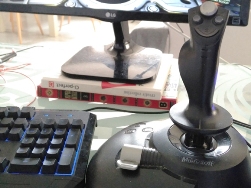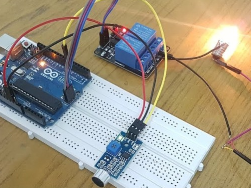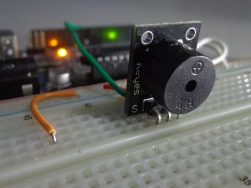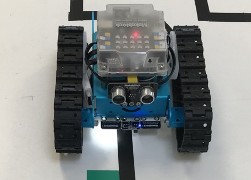The device and principle of operation of the 3D printer, the main methods and types of 3D printing
 At present, 3D printing technologies are increasingly being used to create decorative elements, machine parts and apparatuses, and various functional units. And the most relevant developments allow you to print entire buildings and even organs and prostheses for humans. At the same time, printers can be found on the market starting at several hundred dollars, for domestic use and tens of thousands of dollars - for industrial use.
At present, 3D printing technologies are increasingly being used to create decorative elements, machine parts and apparatuses, and various functional units. And the most relevant developments allow you to print entire buildings and even organs and prostheses for humans. At the same time, printers can be found on the market starting at several hundred dollars, for domestic use and tens of thousands of dollars - for industrial use.
In this article, we will cover basic information about the types and design of a 3D printer. The concept of 3D printing is not so clear. It is divided into many types, differing on the principle of forming a printable object and the materials used for this. What are they like? FDM-printing is the most common way to obtain volumetric objects in everyday life, respectively, and the cheapest option for volumetric printing. In this case, the 3D printer prints with molten plastic ...
How the joystick works and works
 The first mention of the word “joystick” in the context of narrations about a swinging control element in aviation is found, for example, in Robert Loren, who wrote in 1910 about a tied central lever to prevent accidental take-off. One version of the name of this lever says that the joystick got it in honor of the inventor by the name of George - George stick, and then they began to call it more briefly - “joystick” - a stick of joy, as a symbol of the joy of flight.
The first mention of the word “joystick” in the context of narrations about a swinging control element in aviation is found, for example, in Robert Loren, who wrote in 1910 about a tied central lever to prevent accidental take-off. One version of the name of this lever says that the joystick got it in honor of the inventor by the name of George - George stick, and then they began to call it more briefly - “joystick” - a stick of joy, as a symbol of the joy of flight.
The first use of this kind of tilt knot was realized on Confederate submarines for steering. In 1943, the Nazis used an electric joystick to control a joystick-type rocket. Later, in the 1960s, electric joysticks began to be introduced everywhere, starting with radio-controlled aircraft models and ending with electric wheelchairs. Today, the joystick is most associated with a computer data input device ...
How sound sensors (noise sensors) are arranged and work
 A sound or noise sensor is usually used in conjunction with fixtures, so that when popping, the sound of voice or steps, or simply in the presence of noise, light is lit in the room. The light can be turned on and stayed on constantly, or for a limited period of time, or for as long as the sensor “hears” steps, noise, or voice, that is, while at least one person is walking around the room, equipment is working, or someone is talking .
A sound or noise sensor is usually used in conjunction with fixtures, so that when popping, the sound of voice or steps, or simply in the presence of noise, light is lit in the room. The light can be turned on and stayed on constantly, or for a limited period of time, or for as long as the sensor “hears” steps, noise, or voice, that is, while at least one person is walking around the room, equipment is working, or someone is talking .
This solution not only reduces the cost of lighting, it also provides a flexible and convenient automated approach to controlling the on and off lights. Sound (noise) sensors are distinguished by the ability to adjust the sensitivity of the microphone, therefore, they enable the user to make fine adjustments to a certain volume (recognized as a signal to action) of sound. Sensors working on this principle appeared at the end ...
How does an electric scooter work?
 Recently, in parks and on the streets of our cities, especially in the dry and warm season, you can notice more and more electric scooters. Over the past few years, they have managed to turn from toys into a full-fledged means of individual transportation akin to a once-uncontested bicycle.
Recently, in parks and on the streets of our cities, especially in the dry and warm season, you can notice more and more electric scooters. Over the past few years, they have managed to turn from toys into a full-fledged means of individual transportation akin to a once-uncontested bicycle.
On an electric scooter, you can tirelessly maneuver along the sidewalk or even among cars in a traffic jam. It is always convenient to ride a scooter through the square, get to work on the shortest path, and there will be no problems finding a parking place, as is the case with scooters. Let's talk about the device of an electric scooter, pay attention to the principle of its operation.Just note that the received idea of the general structure of the electric scooter does not guarantee that you will become a specialist in the service of this vehicle ...
Method of electromagnetic induction in wireless energy transfer
 A method of transmitting electrical energy to a distance without using a conductive medium is called wireless transmission of electricity. By 2011, several successful experiments were carried out in the microwave range with capacities of several tens of kilowatts, while the efficiency was about 40%.
A method of transmitting electrical energy to a distance without using a conductive medium is called wireless transmission of electricity. By 2011, several successful experiments were carried out in the microwave range with capacities of several tens of kilowatts, while the efficiency was about 40%.
This happened first in 1975 in California and the second time in 1997 on Reunion Island. The longest distance was about one kilometer, an experiment was conducted to study the energy saving possibilities of one village without using a traditional cable. Technologically, the principles of electric power transmission over a distance include, depending on the transmission distance, the following. At short distances at low powers - induction and resonance methods, such as in RFID tags and smart cards ...
What is a buzzer and how does it work
 The word "buzzer" comes from the German "summen" - buzz. In essence, this is a sound-emitting device traditionally used as a signaling device. To date, buzzers are electromechanical and piezoelectric. Both that and others find application in different devices.
The word "buzzer" comes from the German "summen" - buzz. In essence, this is a sound-emitting device traditionally used as a signaling device. To date, buzzers are electromechanical and piezoelectric. Both that and others find application in different devices.
Historically, the first appeared electromechanical buzzer, which is an electromechanical relay with normally closed contacts through which the coil of this relay is connected to a current source. The principle of operation of the buzzer is simply impossible. When a current flows in the buzzer's working circuit, the relay coil is excited, which means that the magnetic flux in its core increases, under the influence of which the contacts through which the coil itself has just been fed open immediately. When the contacts are opened, the relay winding stops receiving power, the magnetic flux in the core disappears, which means that the movable contact that just closed the circuit is released ...
What is a gyroscope and accelerometer
 Many modern devices and gadgets have gyroscopes and accelerometers built into them. Smartphones, video and cameras, tablets, readers, etc. - these devices are found almost everywhere, although their presence is not at all noticeable if you look at the device from the outside. The gyroscope is also called the gyro sensor, and the accelerometer is called the G-sensor. Working in pairs, these devices perfectly complement each other, providing usability and flexibility of the gadget functions.
Many modern devices and gadgets have gyroscopes and accelerometers built into them. Smartphones, video and cameras, tablets, readers, etc. - these devices are found almost everywhere, although their presence is not at all noticeable if you look at the device from the outside. The gyroscope is also called the gyro sensor, and the accelerometer is called the G-sensor. Working in pairs, these devices perfectly complement each other, providing usability and flexibility of the gadget functions.
The accelerometer in its simplest form is a weight mounted on a spring, installed in its own housing. When shaking or turning the body, the weight moves inside it by inertia. And since the weight moves during acceleration in the corresponding direction, it inevitably pulls the spring along with it, the oscillations of which can be taken into account to determine the direction and accelerate the change in the position of the entire body. So, three springs with weights installed along ...
How the line sensor is arranged and works
 Often in constructions based on arduino (and not only), especially in amateur robotics, it can be useful to recognize the presence of a particular surface in the coverage area of the device or even measure the distance to it. An analog or digital line sensor will be useful for this purpose.
Often in constructions based on arduino (and not only), especially in amateur robotics, it can be useful to recognize the presence of a particular surface in the coverage area of the device or even measure the distance to it. An analog or digital line sensor will be useful for this purpose.
The sensor can be installed, for example, on the platform of the robot, in order to limit the area of its movement to the limits of a certain working circuit. So the robot can simply follow the line or along the line, and never go beyond the work area, or, if necessary, it will keep at a certain distance from this bounding surface.An analog line sensor can not only distinguish between black and white surfaces, it is also able to respond to other colors and their intermediate shades. In addition, the analog line sensor allows you to measure the distance to the surface of the selected color ...
